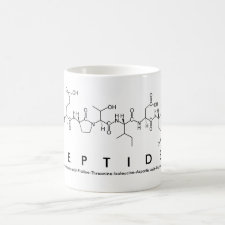
Authors: Sai N, Wu YT, Sun Z, Yu GG, Huang GW
Article Title: A novel photonic sensor for the detection of chloramphenicol.
Publication date: 2019
Journal: Arabian Journal of Chemistry
Volume: 12
Issue: (8)
Page numbers: 4398-4406.
DOI: 10.1016/j.arabjc.2016.06.015
Alternative URL: https://www.sciencedirect.com/science/article/pii/S1878535216300934
Abstract: A novel photonic sensor using a self-cross-linked imprinting close-packed opal (CPO) as a recognition element was developed for the detection of chloramphenicol (CAP). The self-cross-linked imprinting CPO film was consisted of monodisperse molecular imprinted - N-hydroxymethylacrylamide particles (MI-HAM particles) with self-assembling and self-crosslinking properties. A dilute dispersion of these particles was self-assembled to formation of the highly ordered CPO structure, and at the same time the neighboring particles reacted to form covalent bond to stabilize the CPO structure at the air/dispersion. Thus the obtained self-cross-linked imprinting CPO was characterized by a highly stable three-dimensional (3D) CPO structure without the interference of bulk hydrogel matrix, in which numerous CAP recognition sites were dispersed through the molecular imprinted process. The inherent high affinity of the recognition sites allowed the self-cross-linked imprinting CPO to recognize CAP with high specificity, and changes of the periodic structure enabled the self-cross-linked imprinting CPO to transfer the recognition events into readable optical signals. Then the self-cross-linked imprinting CPO film was packed into a reaction cell with an optical spectrometer to establish a novel photonic sensor. A linear relationship was found between the diffraction intensity decrease and CAP concentration in the range from 2ng mL-1 to 512ng mL-1, whereas there was no obvious optical change for CAP analogues, thus indicating that the sensor had selective and sensitive response to CAP molecules. Furthermore, the sensor was applied successfully to detect CAP in drinking water samples. As a result, the developed sensor might offer a potential alternative in routine supervision for residue due to its convenience, low cost, reusability, and high sensitivity as well as selectivity
Template and target information: chloramphenicol, CAP
Author keywords: Photonic sensor, molecular imprinting technique, Self-cross linking, Close-packed opal, N-hydroxymethylacrylamide, chloramphenicol



Join the Society for Molecular Imprinting

New items RSS feed
Sign-up for e-mail updates:
Choose between receiving an occasional newsletter or more frequent e-mail alerts.
Click here to go to the sign-up page.
Is your name elemental or peptidic? Enter your name and find out by clicking either of the buttons below!
Other products you may like:
 MIPdatabase
MIPdatabase









